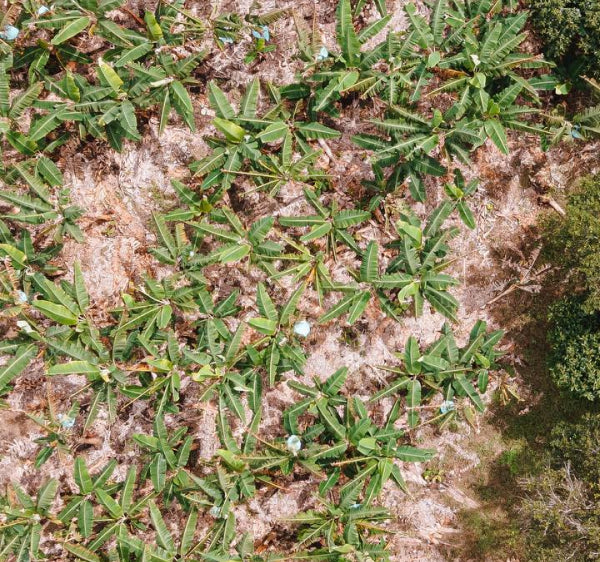
Regenerative Agriculture



Bare Soils
- No protection from natural elements -
CHEMICAL HERBICIDES
- Toxic for plants and animals -
MONO-CROPPED SYSTEMS
- Vulnerable to pests and diseases -
MINIMAL BIOMASS
- Less efficient at using the sun's energy -

DIVERSE COVER CROPS
- Promoting life and health of soil biome -
ORGANIC INPUTS
- Naturally derived, when needed -
INCREASINGLY DIVERSE SYSTEMS
- Emulating the resilient design of nature -
NATURALLY CAPTURING CARBON
- From the atmosphere, into the soil -

Why We Care
“Every story I hear about Regenerative Agriculture makes me want to give planet earth a standing ovation. It pulls a string on my heart. When I know the positive impact it can have on the planet we live in, on my life, my kids’ lives and my future grandkids’ lives…well, you just can’t turn a blind eye. Artisan Tropic will always pursue truth and wellness, which is why we as a team feel so led to pursue Regenerative Agriculture with all we have. We invite you to be a part of this journey with us!”
WHY REGENERATIVE?









